Barrett M107A1 .50 BMG 29" 10rd Rifle, Black – 18059-S For Sale
$10,999.99
The Barrett M107A1 .50 BMG 29″ 10rd Rifle in Black – 18059-S represents the pinnacle of over 35 years of research and development, incorporating feedback from elite military users to create a firearm that combines iconic design with unprecedented enhancements. Maintaining Barrett’s renowned reliability, this rifle features substantial improvements, including advanced engineering and high-quality materials that make it lighter by 4 pounds while retaining its strength and performance. Optimized for use with a sound suppressor, it offers significant signature reduction for modern warfare, ensuring accuracy and capability in challenging environments. The M107A1 is a testament to cutting-edge firearm engineering, catering to those who demand excellence in their operational tools.
What is the difference between M107A1 and M82A1?
The M107A1 and M82A1 are both .50 caliber sniper rifles developed by Barrett Firearms, known for their anti-material capabilities. Here are the main differences between them:
1. **Weight:** The M107A1 is generally lighter than the M82A1, as it incorporates more modern materials and design updates to reduce weight.
2. **Design Enhancements:** The M107A1 has several design modifications to improve performance and reliability, including a redesigned muzzle brake, a Barrett-designed suppressor, and a quick-detach suppressor interface.
3. **Material Improvements:** The M107A1 often includes the use of titanium and other lightweight materials for components like the receiver, which contribute to its reduced weight and improved durability compared to the M82A1.
4. **Suppressor Compatibility:** The M107A1 is optimized for use with a suppressor, which is a feature not standard on the M82A1. This includes enhancements like an adjustable gas block to maintain reliability when shooting suppressed.
5. **Accuracy and Ergonomics:** The updates in the M107A1 can also lead to improved accuracy and ergonomics over the older M82A1 design.
Both rifles maintain similar capabilities, but the M107A1 represents an evolution of the M82A1 with enhancements aimed at addressing the needs of modern military and tactical users.
Can you legally own a Barrett 50 Cal?
In the United States, the legal ownership of a Barrett .50 caliber rifle, such as the Barrett M82 or M107, varies by state and local laws. Federally, these rifles are legal to own, as they are classified as Title I firearms under the Gun Control Act of 1968, meaning they are regulated in the same manner as standard rifles and shotguns.
However, some states and localities have stricter regulations. For instance, California, Connecticut, and Washington D.C. have specific laws that ban or heavily restrict the ownership of firearms of this caliber. Some other states might have additional restrictions related to storage, transportation, or magazine capacity.
To legally own a Barrett .50 caliber rifle, you typically must:
1. Meet the minimum age requirement, usually 18 for rifles.
2. Pass a background check conducted by a licensed firearms dealer.
3. Comply with all state and local laws regarding firearms ownership and possession.
Always consult the latest local and state laws or a legal expert to ensure compliance with all regulations before attempting to purchase or own such a firearm.
What is the maximum range of the Barrett m107a1?
The maximum range of the Barrett M107A1 is approximately 7,450 yards, or about 6,812 meters.
What is the biggest sniper rifle in the world?
The biggest sniper rifle in the world is often considered to be the Anzio 20mm Rifle. This rifle is chambered for the 20mm caliber, which was originally designed for anti-aircraft and anti-tank use. It is known for its massive size and powerful capabilities, making it one of the largest sniper rifles in existence.
Is the 416 Barrett better than the 50 BMG?
The .416 Barrett and the .50 BMG are both powerful long-range cartridges, but they have different characteristics that might make one preferable over the other depending on the application.
1. **Ballistics and Performance:**
– The .416 Barrett is known for its high ballistic coefficient, which helps it maintain velocity over long distances. It is designed to be a flat-shooting cartridge with excellent accuracy, making it well-suited for extreme long-range precision shooting.
– The .50 BMG, on the other hand, has significant stopping power and is effective at very long ranges. It is a larger caliber with more kinetic energy, making it suitable for anti-material and military applications.
2. **Recoil:**
– The .416 Barrett generally has less recoil than the .50 BMG, which can be an advantage for some shooters, especially in terms of managing follow-up shots.
3. **Purpose:**
– If your primary focus is shooting at extreme distances with precision, the .416 Barrett might be considered “better” due to its flatter trajectory and accuracy.
– For applications requiring significant impact force and versatility, such as military or anti-material roles, the .50 BMG could be more suitable.
4. **Cost and Availability:**
– The .50 BMG is more widely used and generally more available in terms of ammunition and rifles chambered for it. The .416 Barrett, while growing in popularity, may be more niche and potentially more expensive.
In summary, neither cartridge is universally “better” than the other. The best choice depends on specific needs and preferences, including intended use, desired range, and logistical considerations like cost and availability.
Is the M107 a sniper rifle?
Yes, the M107 is a sniper rifle. It is a designation used for the Barrett M82, a semi-automatic, long-range anti-materiel and sniper rifle.
What states ban 50 cal rifles?
As of the latest information, several states in the United States have regulations or bans on .50 caliber rifles, though specifics can vary. Here’s a general overview:
1. **California** – Bans the sale, transfer, and possession of .50 BMG rifles.
2. **Connecticut** – Regulates .50 caliber firearms under the same laws that apply to assault weapons.
3. **Maryland** – Includes the Barrett .50 cal rifles in its list of banned “assault long guns.”
4. **New Jersey** – Classifies .50 caliber firearms as destructive devices, making their possession illegal.
For the most accurate and current information, it’s important to check the specific laws and regulations in each state as they can change.
What does BMG stand for in guns?
In the context of guns, BMG stands for “Browning Machine Gun.” It is commonly associated with the .50 BMG cartridge, which was developed for the M2 Browning heavy machine gun.
Can you hunt deer with a Barrett 50 cal?
Hunting regulations vary by location, but generally speaking, using a Barrett .50 cal to hunt deer is not advisable and may even be illegal in many areas. The .50 caliber rifle is extremely powerful and designed for long-range military applications, not typical hunting scenarios. Many jurisdictions have specific regulations on the caliber and type of firearms that can be used for hunting, and a .50 cal often exceeds what is permitted due to concerns about safety, over-penetration, and the unnecessary damage it can cause to the animal. It’s important to check the specific hunting regulations in your area to ensure compliance with the law.
What rifle do navy SEALs use?
Navy SEALs primarily use the M4A1 carbine as their standard service rifle. The M4A1 is favored for its versatility, compact size, and fully automatic capability, making it well-suited for a variety of missions. Additionally, they may use other rifles, such as the HK416, depending on operational requirements.
What size barrel is the M107A1?
The M107A1, a semi-automatic, long-range sniper rifle produced by Barrett Firearms, typically features either a 20-inch or a 29-inch barrel.
How many FPS is a Barrett 50 cal?
A Barrett .50 caliber rifle, such as the Barrett M82, typically has a muzzle velocity of approximately 2,800 to 2,900 feet per second (fps) when firing standard .50 BMG (Browning Machine Gun) ammunition.
Can a civilian own a 50 cal machine gun?
In the United States, civilians can own a .50 caliber machine gun, but there are significant legal restrictions and requirements.
Under federal law, machine guns are regulated by the National Firearms Act (NFA). To own a fully automatic .50 caliber machine gun, the weapon must have been manufactured and registered before May 19, 1986, due to the Firearm Owners’ Protection Act, which prohibits the civilian ownership of machine guns made after this date.
A civilian must complete an extensive application process through the Bureau of Alcohol, Tobacco, Firearms and Explosives (ATF), which includes a background check, fingerprinting, and payment of a $200 tax. Additionally, local and state laws may impose further restrictions or outright bans on owning such firearms. It’s important for civilians to consult legal experts and local laws to understand all requirements and restrictions.
Can you just buy a 50 cal?
The ability to purchase a .50 caliber firearm depends on the laws and regulations of the country or state you are in. In the United States, for example, purchasing a .50 caliber rifle is generally legal at the federal level, but individual states may have specific regulations or restrictions. You would typically need to meet age requirements, pass a background check, and comply with any local laws. Always check the specific laws relevant to your location before attempting to purchase a firearm.
In what states is full auto legal?
As of my last update, fully automatic firearms (commonly referred to as “full auto”) are legal to own in several states in the U.S., but their ownership is heavily regulated under federal law by the National Firearms Act of 1934 and the Firearm Owners’ Protection Act of 1986. Consequently, fully automatic firearms made after May 19, 1986, cannot be privately owned by civilians. For those made before this date, civilian ownership is allowed provided all federal and state regulations are followed. This typically includes passing a background check, obtaining a federal tax stamp, and registering the weapon with the Bureau of Alcohol, Tobacco, Firearms and Explosives (ATF).
Here’s a list of states where individuals may legally own full-auto firearms, subject to restrictions and compliance with federal regulations:
1. Alabama
2. Alaska
3. Arizona
4. Arkansas
5. Colorado
6. Connecticut
7. Florida
8. Georgia
9. Idaho
10. Indiana
11. Iowa
12. Kansas
13. Kentucky
14. Louisiana
15. Maine
16. Maryland
17. Mississippi
18. Missouri
19. Montana
20. Nevada
21. New Hampshire
22. New Mexico
23. North Carolina
24. North Dakota
25. Ohio
26. Oklahoma
27. Oregon
28. Pennsylvania
29. South Carolina
30. South Dakota
31. Tennessee
32. Texas
33. Utah
34. Vermont
35. Virginia
36. Washington
37. West Virginia
38. Wisconsin
39. Wyoming
Note that while ownership might be legal in these states, individual state laws can impose additional restrictions or requirements. Always verify with current local and state laws, as regulations can change.
| Model | M107A1 |
|---|---|
| Action | Semi-Auto |
| Twist | 1 |
Be the first to review “Barrett M107A1 .50 BMG 29" 10rd Rifle, Black – 18059-S” Cancel reply
Related products
Barrett M107A1
Barrett Firearms M107 A1 .50 BMG Semi-Automatic Rifle, Gray Cerakote/Black Parkerized – 14552
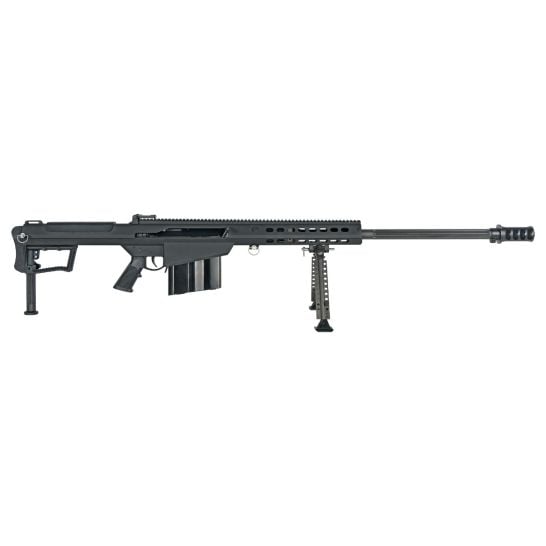
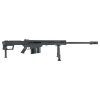
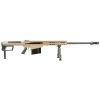
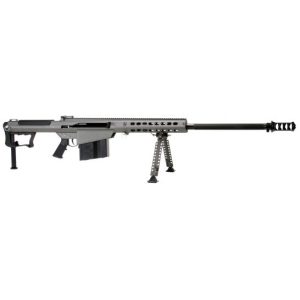
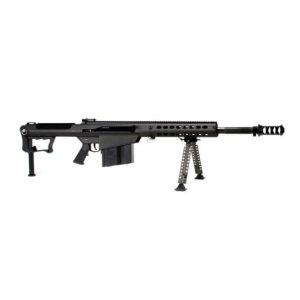
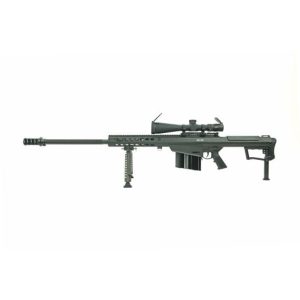
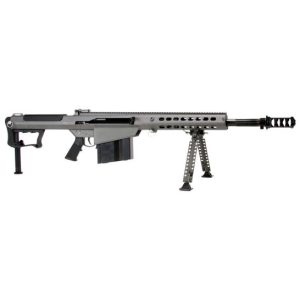
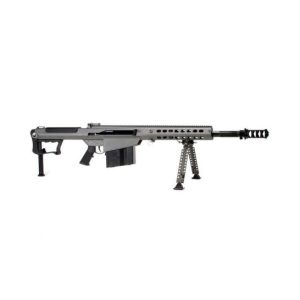
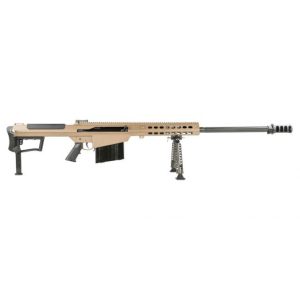
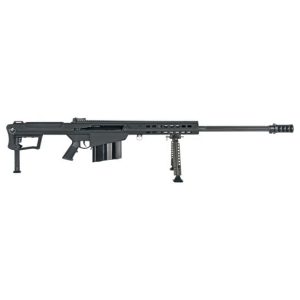
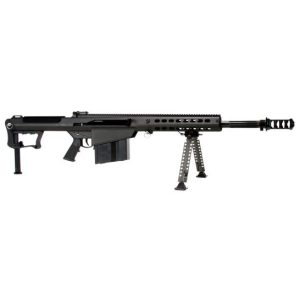
Reviews
There are no reviews yet.